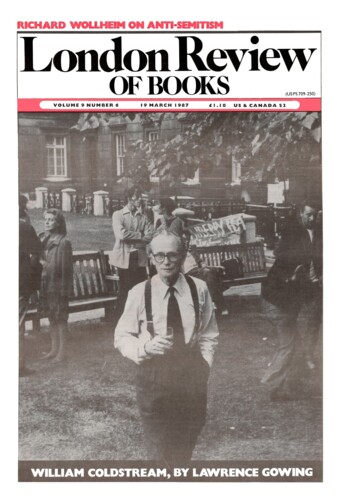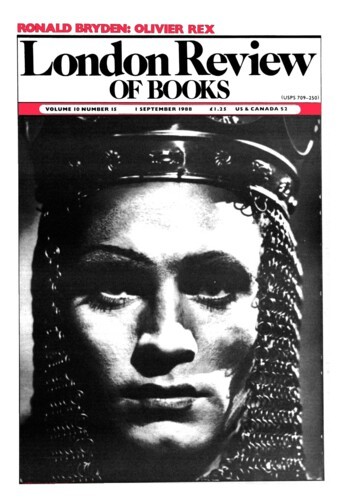Giacometti and Bacon
David Sylvester, 19 March 1987
Giacometti’s widow, says the preface, has chosen ‘to prevent the appearance in her husband’s biography of any unpublished writings by him of whatever sort: letters, journals or random notations’. Another recent biography of a leading modern artist was composed under similar restrictions. Peter Ackroyd says he was ‘forbidden by the Eliot estate to quote from Eliot’s published work, except for purposes of fair comment in a critical context, or to quote from Eliot’s unpublished work or correspondence’. As it happens, the two subjects, while profoundly unalike inasmuch as Giacometti was an atheist, a leftist and a bohemian, had many things in common, besides good looks, charisma, chronic mental torment and the hesitant production of a relatively small corpus of work notable for its marvellous marriage of innovation and tradition. Both of them came from cultivated and comfortably-off families rooted for generations in a backwater and both went on to spend their adult lives in a metropolis in a foreign land; both were quick to win fame as artists and quickly became legends, yet almost into middle age could not earn a living from their art and had to work in other areas to survive; both of them married but had no children; both were dominated – people say – by a mother – and haunted – the work says – by the idea of doing a girl in.’





